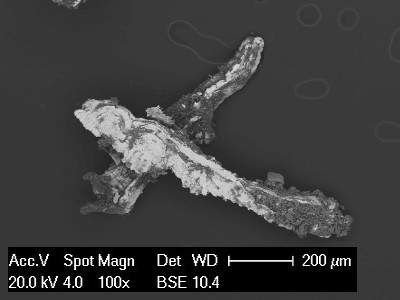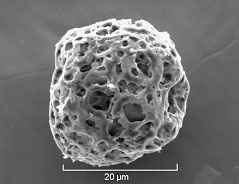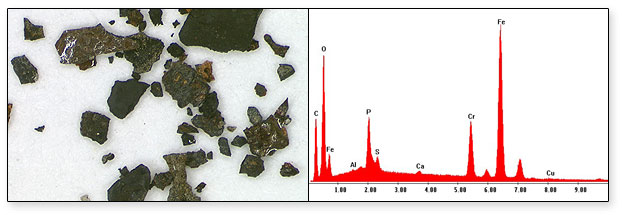Foreign Body and Particle Contamination Identification
 Foreign body particle contamination is problematic for many industries where they can appear unexpectedly mixed or buried in solid materials, plus within liquids and gases. Isolating the particle contamination or foreign body then characterising and identification of the particle composition found in products or processes can usually yield a likely source for the particle or foreign body. Once the source of the particulate is known then elimination or control of the contamination or foreign body becomes substantially easier.
Foreign body particle contamination is problematic for many industries where they can appear unexpectedly mixed or buried in solid materials, plus within liquids and gases. Isolating the particle contamination or foreign body then characterising and identification of the particle composition found in products or processes can usually yield a likely source for the particle or foreign body. Once the source of the particulate is known then elimination or control of the contamination or foreign body becomes substantially easier.
At LPD Lab Services we have extensive experience in identifying and characterising particulate contamination and foreign bodies both from our historic own manufacturing on-site and performing this type of work for external customers.
Contramination particles can have many sources e.g. metals and alloys, biological (skin, hair etc), polymers, water systems, filtration, building dusts, cleanrooms and medical devices to name but a few. All particles and foregn particulate matter FPM have characteristic properties such as shape, size and chemistry which assist in identification. SEM / EDX coupled with optical microscopy provides analytical tools for unambiguously identifying such particles. The technique is frequently coupled with FTIR and perhaps GC-MS when identifying the source of organic contamination.
We can perform this work on virtually any sample types including:
- Liquid samples – suspended particles, sediment, residues, contaminants and precipitates
- Filters and membranes
- Product surfaces like rubber, ceramic, glass, catalysts, building materials
- Buried within product materials such as laminates, plastic fims, glass, ceramics, inclusions in metals and alloys
- On metals, alloys, rust or corrosion
- Foreign bodies within regulated products in cleanrooms, medical device or pharmaceutical.
- Debris, particles and fibres in food, drink and liquids.
LPD have seen samples from a wide number of sectors including – automotive, aerospace, food, medical device, healthcare, pharmaceutical, Oil & Gas, construction, FMCG, plumbing, paints and coatings.
Examples are shown below of particulate identification work:
 The image shows a particle or Foreign Particlate Matter FPM on the surface of a metal grid on an electron gun from a cathode ray tube. The gun had failed for an insulation leakage between adjacent gun lenses and during dismantling of the gun, a few fine particles were seen in the gap between these grids.
The image shows a particle or Foreign Particlate Matter FPM on the surface of a metal grid on an electron gun from a cathode ray tube. The gun had failed for an insulation leakage between adjacent gun lenses and during dismantling of the gun, a few fine particles were seen in the gap between these grids.
A contaminant particle was analysed in the SEM and this showed it to contain mainly carbon, with small amounts of oxygen and sulphur.
From the analysis and appearance of the foreignparticle, it was identified as either soot or a charred pollen grain. Speaking to the customer, it transpired that the gun had been dried in an oven at 140°C after a washing process. The solution to the problem was to fit a filter to the fan system to prevent ingress of airborne contamination during drying.

Particulate matter analysis by SEM of oxidised steel particles found in chemical tank together with EDX analysis showing chemical information. The particles were identified as rust from defective pipework.
Please contact us today to discuss your particle characterisation needs in detail.
Application Notes

